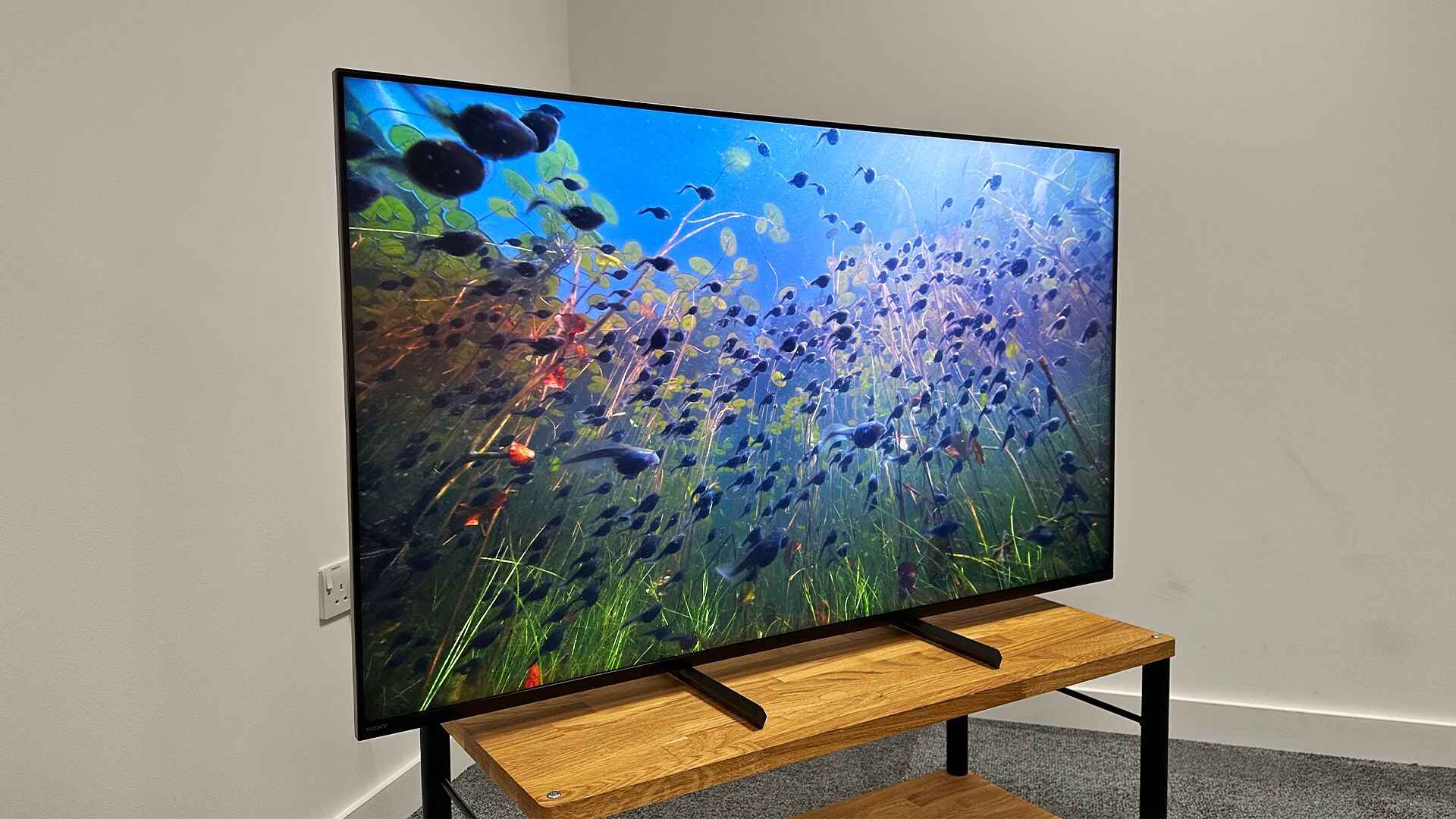Introduction
Welcome to the world of smart home technology! With advancements in voice recognition and smart devices, it has become easier than ever to control your home appliances using just your voice. One popular smart device that has captured the attention of tech enthusiasts is Amazon’s Alexa. Alexa is a voice-controlled personal assistant that can perform a wide range of tasks, from playing music to answering questions and even controlling your home’s lighting. But did you know that Alexa can also be programmed to use your surround sound system?
Imagine being able to control your entire home entertainment system with just a few words spoken to Alexa. You can play your favorite music, watch movies with immersive sound, and even adjust the volume without lifting a finger. In this article, we will guide you on how to program Alexa to use your surround sound system, transforming your home into a personal theater.
Before we dive into the details, it’s essential to have a basic understanding of Alexa and the capabilities it offers. Alexa is powered by artificial intelligence and operates through Echo devices, such as the Echo Dot, Echo Show, or Echo Studio. These devices act as the central hub for interacting with Alexa and connecting to various smart home appliances, including your surround sound system.
Additionally, you need to make sure that your surround sound system is compatible with Alexa. Most modern home theater systems have built-in Wi-Fi or Bluetooth connectivity, allowing them to be easily integrated with smart home devices. However, if your system doesn’t have this functionality, there are alternative methods that we will explore.
With a solid understanding of Alexa and the compatibility requirements, let’s move on to the next section, where we will guide you through the setup process for your surround sound system.
Understanding Alexa
Before programming Alexa to use your surround sound system, it’s important to have a good understanding of how Alexa works and what it can do. Alexa is Amazon’s virtual assistant that operates through Echo devices, which are voice-controlled speakers. With its advanced voice recognition technology and integration with various smart home devices, Alexa has become a popular choice for controlling smart appliances.
One of the key features of Alexa is its ability to perform tasks through voice commands. You can simply say “Alexa” to wake up the device, followed by a specific command, and Alexa will respond accordingly. Whether you want to play music, get the weather forecast, set reminders, or control your home automation systems, Alexa can do it all.
Alexa’s capabilities are not limited to just basic tasks. It can connect to a wide range of smart home devices, including thermostats, lights, security cameras, and, of course, your surround sound system. This integration allows you to control your entertainment system with voice commands, making it easier than ever to enjoy a cinematic experience from the comfort of your home.
Moreover, Alexa has a growing library of tens of thousands of skills, which are essentially third-party apps that enhance its functionality. These skills cover a wide range of categories, including music streaming, smart home automation, games, and more. By enabling specific skills, you can unlock additional features and commands for Alexa.
When it comes to programming Alexa to use your surround sound system, it’s important to check the compatibility of your system with Alexa. Most modern home theater systems have built-in Wi-Fi or Bluetooth connectivity, making it easy to connect to Alexa-enabled devices. This allows you to control your surround sound system using voice commands, such as playing specific songs, adjusting the volume, or switching inputs.
However, if your surround sound system doesn’t have built-in connectivity options, there are alternative methods you can explore. Some systems offer compatibility with devices like smart hubs or media streaming devices, which can act as an intermediary between Alexa and your surround sound system. These devices enable you to control your system through Alexa, even if it lacks direct integration.
Now that you have a better understanding of Alexa and its capabilities, let’s proceed with the setup process for your surround sound system in the next section.
Setting up your Surround Sound System
Before you can program Alexa to use your surround sound system, you need to ensure that your system is properly set up and connected. Here are the steps to get your surround sound system up and running:
- Choose the ideal location: Decide where you want to install your surround sound system. Consider factors such as the size of the room, furniture placement, and acoustics. For optimal sound quality, it’s recommended to position the speakers equidistant from the primary listening area.
- Placement of speakers: Depending on your specific system, you will have different speakers, such as front left and right, center, surround speakers, and subwoofer. Follow the instructions provided by your system’s manufacturer for the recommended placement of these speakers. The configuration may vary, but a common setup is 5.1, where you have five speakers and one subwoofer.
- Connect the speakers: Using the provided speaker wires, connect each speaker to the corresponding audio outputs on your surround sound receiver or amplifier. Ensure that the connectors are securely attached and the polarity (+/-) is correct.
- Connect the receiver: The receiver is the central hub that powers and processes the audio signals. Connect your audio/video sources, such as Blu-ray players, gaming consoles, or streaming devices, to the corresponding inputs on the receiver using HDMI or optical cables. Connect the receiver to your television using an HDMI cable.
- Connect the subwoofer: If your system includes a subwoofer, connect it to the subwoofer output on the receiver using a dedicated subwoofer cable.
- Power up the components: Plug in all the components, including the receiver, speakers, and subwoofer, to a power source. Ensure that all the connections are secure and turn on the power.
- Configure the audio settings: Using the on-screen menu or front panel display of the receiver, navigate to the audio settings and configure them according to your preferences. Adjust parameters such as speaker size, distance, and volume levels to optimize the audio performance.
Once your surround sound system is set up and functioning correctly, you can proceed to the next section, where we will guide you on connecting Alexa to your surround sound system.
Connecting Alexa to your Surround Sound System
Now that your surround sound system is set up and ready to go, it’s time to connect it to your Alexa-enabled device. Follow these steps to establish the connection:
- Ensure Wi-Fi connectivity: Make sure both your surround sound system and Alexa-enabled device are connected to the same Wi-Fi network. If your surround sound system supports Bluetooth connectivity, check if it is enabled and ready to pair.
- Open the Alexa app: Launch the Alexa app on your smartphone or tablet. If you don’t have the app, you can download it from the app store associated with your device’s operating system.
- Go to settings: Tap on the menu icon in the top-left corner of the app and select “Settings” from the menu. This will open the settings menu for your Alexa-enabled device.
- Select your device: Under the “Devices” section, choose your Alexa-enabled device that you want to pair with your surround sound system.
- Set up your device: Follow the on-screen prompts to complete the setup process for your Alexa-enabled device. This may include selecting your language, connecting to your Wi-Fi network, and signing in to your Amazon account.
- Enable the skill: Once your device is set up, go back to the settings menu and select “Skills & Games.” Search for the skill associated with your surround sound system. Enable the skill and follow any additional setup steps provided by the manufacturer.
- Link your accounts: After enabling the skill, you may need to link your Amazon and surround sound system accounts for seamless integration. Follow the instructions provided in the app to complete this step.
- Discover devices: With the skill enabled and accounts linked, go back to the settings menu and select “Devices.” Tap on “Discover” or “Add Device” to allow Alexa to scan for compatible devices, including your surround sound system.
- Complete the setup: Once Alexa discovers your surround sound system, follow the on-screen prompts to complete the setup process. This may involve confirming the found devices and assigning them to specific rooms or groups.
Once the setup is complete, Alexa should now be connected to your surround sound system. You can now proceed to the next section, where we will walk you through the process of programming Alexa to effectively use your surround sound system.
Programming Alexa to use your Surround Sound System
Now that your Alexa device and surround sound system are connected, it’s time to program Alexa to effectively use your surround sound system. Here’s how to do it:
- Open the Alexa app: Launch the Alexa app on your smartphone or tablet.
- Go to settings: Tap on the menu icon in the top-left corner of the app and select “Settings” from the menu.
- Select your device: Under the “Devices” section, choose your Alexa-enabled device that is connected to your surround sound system.
- Set up your device: Follow any on-screen prompts to configure settings specific to your Alexa-enabled device. This may include customizing wake words or adjusting volume settings.
- Set up routines: Routines allow you to automate multiple actions with a single command. For example, you can create a routine called “Movie Night” that turns on your surround sound system, dims the lights, and starts playing your favorite movie. Go to “Routines” in the Alexa app and create routines tailored to your preferences.
- Test the setup: Use simple voice commands to test if Alexa can control your surround sound system. For example, try saying “Alexa, play music on [your surround sound system’s name]” or “Alexa, increase the volume of [your surround sound system’s name].” Alexa should respond and perform the desired actions.
- Explore additional voice commands: Most surround sound systems have specific voice commands that can be used with Alexa. Refer to the user manual or manufacturer’s website to discover the full range of voice commands available for your system. This can include functions like changing audio modes, adjusting bass levels, or switching between input sources.
By programming Alexa to use your surround sound system, you can enjoy a hands-free and immersive home entertainment experience. Whether you want to simply play music or create custom routines for a movie night, Alexa’s integration with your surround sound system allows for effortless control and customization.
In the next section, we will explore how to use Alexa to control your surround sound system and provide some tips for troubleshooting common issues.
Using Alexa to control your Surround Sound System
Now that you have programmed Alexa to use your surround sound system, it’s time to explore how you can effectively control your audio setup using voice commands. Here’s how you can use Alexa to control your surround sound system:
- Playing media: You can ask Alexa to play your favorite music or stream audio from various sources through your surround sound system. Simply say “Alexa, play [song/artist/album] on [your surround sound system’s name].” Alexa will search for the requested media and start playing it through your audio setup.
- Adjusting volume: Alexa allows you to control the volume of your surround sound system using simple voice commands. Say “Alexa, increase/decrease the volume on [your surround sound system’s name]” to adjust the volume to your desired level.
- Switching inputs: If you have multiple input sources connected to your surround sound system, you can switch between them using voice commands. For example, say “Alexa, switch to [input/source name] on [your surround sound system’s name]” to change the input source for your audio setup.
- Changing settings: Depending on your surround sound system’s capabilities, you may be able to adjust various settings through Alexa. For example, you can change the audio mode, tweak equalizer settings, or activate specific sound effects by issuing voice commands such as “Alexa, change audio mode to [mode name] on [your surround sound system’s name].”
- Controlling playback: Enjoying a movie night? You can control the playback of media through voice commands. Say “Alexa, pause/play/stop on [your surround sound system’s name]” to control the playback of your media.
- Creating custom commands: Consider setting up custom routines or using Alexa-compatible third-party apps to create personalized voice commands for your surround sound system. For example, you could create a routine called “Movie Time” that turns on your surround sound system, lowers the lights, and starts playing your favorite movie with just a single voice command.
Remember to refer to your surround sound system’s user manual or manufacturer’s website for specific voice commands and capabilities. Understanding the full range of voice control options will help you maximize the functionality and convenience of using Alexa with your surround sound system.
In the next section, we will discuss some common troubleshooting tips to help you resolve any issues you may encounter when using Alexa with your surround sound system.
Troubleshooting common issues
While using Alexa to control your surround sound system can be a seamless experience, you may encounter some common issues along the way. Here are a few troubleshooting tips to help you resolve them:
- Check Wi-Fi or Bluetooth connectivity: Ensure that both your Alexa-enabled device and surround sound system are connected to the same Wi-Fi network or paired via Bluetooth. Unstable or weak connections can cause communication issues between the devices.
- Restart devices: Sometimes, a simple restart can solve connectivity or functionality issues. Try restarting your Alexa-enabled device, surround sound system, and any other relevant devices in your setup.
- Update firmware and software: Ensure that your Alexa-enabled device, surround sound system, and any associated apps or skills are up to date with the latest firmware and software versions. Updates often include bug fixes and performance improvements.
- Recheck device connections: Verify that all cables and connections between your surround sound system, speakers, and audio/video sources are properly connected and secure. Loose or faulty connections can cause audio issues or loss of functionality.
- Re-discover devices: If Alexa is unable to detect your surround sound system, go to the Alexa app’s settings, select “Devices,” and tap on “Discover” or “Add Device” to allow Alexa to scan for compatible devices again.
- Verify account linking: If your surround sound system requires account linking with Alexa, ensure that the accounts are properly linked. Follow the instructions provided by the manufacturer or refer to the skill’s documentation for the correct account linking process.
- Reset and reconfigure: As a last resort, you can try resetting your Alexa-enabled device or surround sound system to its factory settings and then reconfigure the setup from scratch. This can help resolve more complex issues, but be aware that you will need to set up your devices and connections again.
If you have followed these troubleshooting steps and are still experiencing issues, it may be helpful to contact the manufacturer’s customer support for further assistance. They can provide specific guidance based on the model of your surround sound system and its integration with Alexa.
By following these troubleshooting tips, you can address common issues and enjoy seamless control of your surround sound system using Alexa.
With your surround sound system successfully programmed and connected to Alexa, you can now enjoy the convenience of controlling your home entertainment system using voice commands. Experiment with different voice commands, explore the full capabilities of your system, and enhance your overall audio experience.
Conclusion
In this article, we have explored how to program Alexa to use your surround sound system, transforming your home into a personalized theater. We started by understanding the capabilities of Alexa and the compatibility requirements for your surround sound system. We then walked you through the setup process for your surround sound system, ensuring everything is properly connected. After that, we discussed how to connect Alexa to your surround sound system and program it to effectively control your audio setup.
By using Alexa, you can play music, adjust volume, switch inputs, and even create custom routines to enhance your home entertainment experience. With a simple voice command, you can immerse yourself in a cinematic audio environment without the need to reach for a remote or toggle through different settings manually.
We also provided troubleshooting tips to help you address common issues that may arise during the setup or usage of Alexa with your surround sound system. These tips include checking connectivity, updating firmware and software, verifying connections, and re-discovering devices.
By following the instructions and tips outlined in this article, you can seamlessly integrate Alexa with your surround sound system and enjoy the convenience of controlling your home entertainment system through voice commands.
Now it’s time to sit back, relax, and indulge in an immersive audio experience with your newfound control over your surround sound system through Alexa. Get ready to enjoy your favorite movies, music, and more with just a few simple voice commands.

























